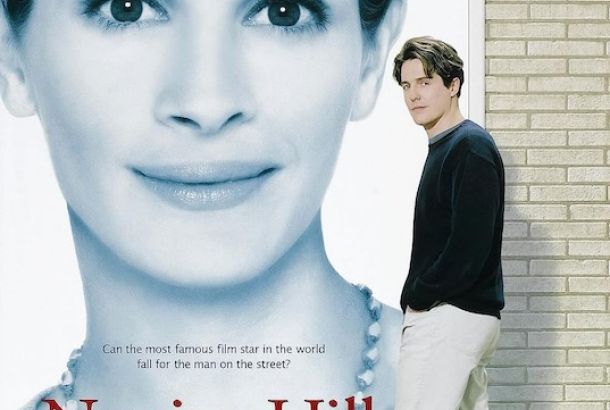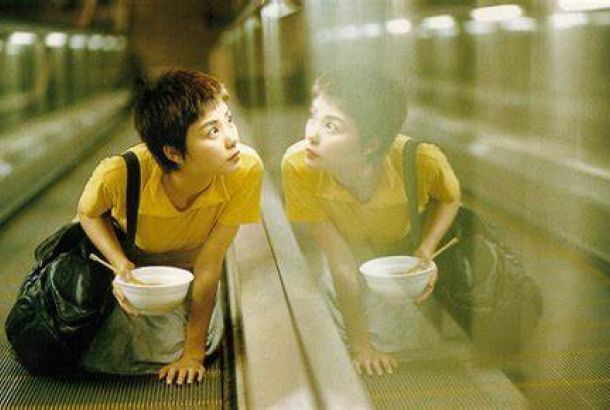Feature: 12 Angry Men revisited
By James Gill
Twelve men sit around a long table in a room. Twelve men with different backgrounds, different upbringings, personalities and prejudices. They are tasked as jurors to reach a verdict on the case of a young man of which the charge is murder in the first degree. If found guilty his punishment would be death. On the surface this looks like an open and shut case, but not everyone is convinced.
Director Sidney Lumet creates something truly remarkable with this, his debut film. Despite fantastic reviews upon release, it did not initially find a following and was a box office disappointment. 60 years later and it is deservedly regarded as a classic, a case study of tension, claustrophobia and subtext.
The jurors, united by their call to duty, do not share any common traits and it is because of this that they are most qualified to judge the case. Each saw their own version of the trial, noticing seemingly irrelevant details such as the indentations on a witness’ nose left by her glasses or the poorly concealed limp of another. Details so small most missed them, but the implications they have can change a person’s entire perspective.
We can summarise the film in five crucial moments, the first of which occurs at the beginning. Once settled down they decide to open with a vote, with some beginning to joke about how quickly they will leave. As hands slowly raise up for the vote of guilty they soon realise one hand stayed down, that of juror #8 (Henry Fonda). Juror #10 scoffs ‘Boy oh boy there’s always one’. The reasoning behind his hand staying down was not because he felt the defendant was innocent, he admitted that may very well be so, but instead that they should not be so hasty sending a young man to the chair.
At this moment, as with most of the first third of the film, the camera is above eye level, looking down upon those seated at the table. The effect of this is that it makes them more accessible and easier to be understood. As we learn the facts of the case through their discussion, the mood is relaxed and open. Notice also here how the depth of each shot changes from this point. Initially the focal length is short, making the depth of view high and consequently give the room an airier feel. This combined with the above-eye camera level allow the audience to see large swathes of the room. All the factors point towards an impartial conversation between civilised men.
As the discussion continues, Juror #8 raises interesting points on topics such as the knife, the ability to hear shouting as a train passes by, and one supposed eyewitness’s questionable version of events. The more logical jurors begin to rethink their decisions leading to the next two crucial moments: Juror #9 taking Fonda’s side making the vote 2-10, and the moment the vote becomes even, 6-6.
From this point on the camera is at eye-level with longer shots being replaced with mid-length shots. The room feels smaller and combined with the rising temperature contributes to an increase in tension. Slowly but surely the more bigoted among them grow inpatient and resort to classist remarks as the amount of evidence supporting a guilty verdict decreases.
An increased emotional intimacy as they open up about their true feelings is emphasised with the closer shots. Jurors #3 and #10 are taking the role of antagonists. The film depicted all twelve as civilised at the start, each as equals but as we learn more, both about them and the case, a positive light is cast upon the non guilty jurors.
The final two moments occur when the vote becomes 3-9 and 1-11. These I feel are the most powerful as they are immediately proceeded by explosive rants by the films two antagonists, Jurors #3 and #10. The remaining guilty voters are not choosing so out of reason, but out of emotion. Hatred towards a class of people viewed as lesser, or out of frustration from a strained relationship with his son. Stubbornness to admit you are wrong causes increased desperation among them, with both only conceding after becoming disgusted with their own actions.
The camera is below eye level now. We, the audience have gone from overseers of the discussion to sat at the table with every slur or hateful remark feeling equally spoken towards us as much as the rest of the jurors. The room is at its most claustrophobic too, as the depth of view is incredibly shallow and the ceiling can be seen in many of the shots making the walls appear to be closing in.
Without exception each man is sweating, trapped inside the room until they reach a unanimous decision. The tension crescendos as Juror #10 erupts, peaking at the moment where he tears up a photo of his son and changes to the twelfth and last not guilty vote.
Finally, 93 minutes in, we can breathe. The camera reverts back to the original state over eye level as the men get dressed to leave. Juror #8, the film’s hero, helps Juror #10 to put on his jacket. Regardless of what just transpired he remains neutral, working for the better wherever possible.
The courage Fonda’s character musters to stand in non-conformity against the intense scrutiny of eleven other people is heroic but also unrealistic. In the event of an 11-1 split, how often will he turn the opinions of them all? The far more likely scenarios involve he himself changing his mind, or if he is relentless, a hung jury.
A real life example to this is the case of Williams vs Cavazos. When it was reported that one of the jurors stood alone against the decision of the rest, each was then cross examined in order. The defiant juror was then dismissed on the grounds that they were biased against the prosecution and, with an alternate juror, a verdict of guilty was reached. However the defence appealed that the sanctity of the jury’s secret deliberations was violated and as such the defendants rights were broken. Interestingly the appeal was successful and the decision reversed.
Where the film grounds itself in the realism of our world is in the blatant ageism, classism and racism of some of the jurors. The most powerful scene taking place after the vote becomes 9-3 in favour of a not guilty verdict. Below is an excerpt of the script that follows:
Juror #10: I don’t understand you people! I mean all these picky little points you keep bringing up. They don’t mean nothing! You saw this kid just like I did. You’re not gonna tell me you believe that phony story about losing the knife, and that business about being at the movies. Look, you know how these people lie! It’s born in them! I mean, what the heck? I don’t have to tell you! They don’t know what the truth is! And lemme tell ya: they don’t need any real big reason to kill someone, either! No sir!
Juror #10: [#5 slams the paper down, gets up from his seat] They get drunk! Oh, they’re real big drinkers, all of ’em – you know that – and bang: someone’s lyin’ in the gutter! Oh, nobody’s blaming them for it. That’s the way they are, by nature! You know what I mean? Violent!
Juror #10: [#9 rises and crosses to the window] Where’re you going? Human life don’t mean as much to them as it does to us!
Juror #10: [#11 gets up and walks to the other window] Look, they’re lushing it up and fighting all the time and if somebody gets killed, so somebody gets killed! They don’t care! Oh, sure, there are some good things about ’em, too! Look, I’m the first one to say that!
Juror #10: [#8 gets up and walks to the nearest wall] I’ve known a couple who were OK, but that’s the exception, y’know what I mean? Most of ’em, it’s like they have no feelings! They can do anything!
[#2 and #6 get up from the table. Everyone’s back is to #10]
Juror #10: [looking around, starting to decline in volume] What’s goin’ on here? I’m trying to tell ya… You’re makin’ a big mistake, you people! This kid is a liar! I know it, I know all about them! Listen to me… They’re no good! There’s not a one of ’em who is any good! I mean, what’s happening in here? I’m speaking my piece, and you…
Juror #10: [The Foreman gets up and walks away. So does #12] Listen to me. We’re… This kid on trial here… his type, well, don’t you know about them? There’s a, there’s a danger here. These people are dangerous. They’re wild. Listen to me. Listen.
Juror #4: [quietly and firmly] I have. Now sit down and don’t open your mouth again.
Juror #10: [the shock of being ignored and silenced sinking in] I’m jus’ tryin’-a… tell ya…
At the beginning when eleven jurors thought the defendant was guilty, most either ignored the discrimination or timidly agreed due to the peer pressure from those much louder than them. They may not have believed in the content of those statements but by not taking a stand they were in silent agreement.
This caused the bigots to continue, under the impression that everybody respected them and their ‘wise words’. Such prejudice is self-perpetuating and as a result very dangerous to society as a whole with the loudest voices often being the least knowledgable, driven by their emotions rather than reason. A quote from Plato reads: ‘An empty vessel makes the loudest sound, so they that have the least wit are the greatest babblers’.
When the room for reasonable doubt increases the jurors tolerance for this simultaneously diminishes, becoming disgusted. In the above scene, each juror slowly got up or turned away from him until just one was left, another guilty voter. It was he who put him in his place, saying not to utter a single word more. His remarks became so extreme that no-one could stand behind him, not even those who were on his side.
60 years on from the release of 12 Angry Men, such situations still occur. There are still those who believe themselves to be above others, whether that be due to wealth, skin colour or another reason. In the technological age, everybody has a voice and only those who shout loudest can be heard. The differences being now that more people will take a stand and those who feel such things are more hesitant about speaking.
The same cannot be said about the internet though. A veil of anonymity gives many the confidence to say things they would not dare in public, making discrimination online rampant. This takes place to such an extent that several major sites such as Vice and IMDb have blocked comments sections as they have become a hive of racism.
While groups of people standing up to bigotry does happen, mostly within the domain of politics, it rarely does in such a manner found in the aforementioned scene, with total disassociation from people of both sides.
Upon the film’s release, only one actor (Henry Fonda) was considered a true star, however all twelve men gave fantastic performances, with no single person rising above the rest. Later four of the other actors beside Fonda would be nominated for Oscars (Lee J. Cobb, Martin Balsam, Ed Begley and Jack Warden) showing the wide range of talent amongst the group. The fact that they all were as impressive in their roles is representative of the film itself, with each of the jurors have the same, equally important role in deciding the man’s fate.
There is so little in terms of plot and diversity of environment throughout the film. Every little detail must therefore contribute to the progression of the narrative. The original playwright Reginald Rose, who co-wrote and co-produced this adaptation, made commanding use of the subtleties of his characters. The enunciation of the words, their body language as they spoke and the manner in which they presented themselves all demonstrated the jurors’ unique personalities.
Besides a small handshake conversation between the first and second not guilty voters as they leave the courthouse, there are no names are mentioned at all. The defendant referred to as ‘the boy’ and the witnesses as ‘the lady across the street’ and ‘the old man’.
As the film progresses this keeps a shroud of mystery over all the characters, with the audience never fully knowing every detail of the case and making their eventual not guilty verdict impossible to completely agree or disagree with.
12 Angry Men is an unsettlingly realistic look at the faults of mankind, with each person under the impression that their vote was the correct one and for the greater good of their society.
The issues raised transcend the screen and the message of impartiality has far ranging applications.
Lumet purposefully tackles such controversial ideas in his films (see Fail-Safe or Dog Day Afternoon), doing so with the upmost respect for the audience’s intelligence. He is rightfully regarded as one of greatest directors of the modern era and this is, perhaps, his masterpiece.







